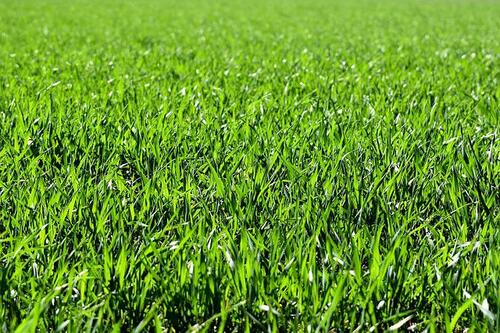Patwari | Origin | Contribution | Administration System | Patwaris Role & Responsibility | Eligibility Criteria | Land Revenue Department | Tehsildar | FAQs
Patwari plays an extremely important role in rural administration. Indian patwaris or patwaris are also referred to as officers in the revenue department.
Patwaris, or the village accountant, play a paramount role in maintaining the records of all villages under the patwari’s administration. The village accountant is often referred to as patwari in northern and central India.
Here we are going to discuss every role and responsibility of Patwari. You will also learn the history of patwaris and how they originated. So, without much ado, let us dive in.
Also, read PM Kisan Samman Nidhi Yojana!
Who Are Patwaris?

Patwaris are government officers responsible for keeping records of all the land in the villages that they supervise. Different states have different names for the Patwari. Patwaris are known as Talatis in West Bengal, Karnams in Andhra Pradesh and North India, and Kanakku Pillais in Tamil Nadu.
Essentially, the patwari is the government’s intermediary between the farmer and the government. People need to contact the patwari first if they want to know anything about their land. Moreover, the patwari also records the type of crops grown on each plot in addition to their area!
Any individual interested in purchasing or selling any piece of land must first contact the regional patwari for the details. Since everything has become digital nowadays, anyone can obtain information and khasra and khatuni numbers from the land record website.
Even though land records are maintained online these days, the patwari still measures and surveys the land manually. Additionally, patwaris enjoy significant authority because they are the main point of contact. Additionally, the patwari’s job is to act as an adjudicator when disputing land matters.
State Revenue Act section 26 requires collectors to appoint patwaris for each circle so the rights records can be prepared and maintained.
What Is The Origin Of The Patwari System In India?

Indian patwaris are believed to have originated during the Mughal era. The Mughal emperor Sher Shah Suri introduced the patwari system in India. The officials further enhanced the patwari system during the rule of Akbar. During the British Empire, the Indian system underwent several modifications.
However, no amendments were made to the patwari system’s mainframe. An Indian law enacted in 1814 mandated the appointment of patwaris to represent the government in every village. The tehsil or the collector was responsible for the appointment of a Patwari.
Moreover, the Patwaris are known by different names in different states. Like in Maharastra, Karnataka, and Gujarat, the Patwari is referred to as ‘Talati’. In Uttar Pradesh Patwaris are known as ‘Lekhpal’.
It is the responsibility of patwaris to manage at least 50 villages in a tehsil, though it may reach as many as 100 villages in some cases.
Patwaris Contribution To The Daily Life Of Individuals

Several people consider Patwaris an essential part of their daily lives. Besides maintaining land records, they are also responsible for collecting taxes. Moreover, Patwaris also assist in resolving and settling disputes between landowners. A Patwari also works as a mediator and often acts between the government and the citizenry.
Patwaris Role In India’s Rural Administration System

Rural areas or villages are the smallest units of the Indian democratic system. Approximately 65% of the country’s population lives in rural areas, representing a daunting administrative challenge.
Administration of the rural population refers to the actions taken by the government to govern public affairs and ensure that rural residents receive benefits from the state. In rural administration, different divisions of authority play an essential role in ensuring good governance. There are several sections in these divisions, including Patwari.
There are 28 states in India. Additionally, each state is divided into several districts. A patwari is then appointed for each district by the Collector to manage the land issues for the district. States are divided into different districts called Tehsils or Taluks. Many small villages are spread across a taluk or tehsil.
It is the responsibility of patwaris to manage at least 50 villages in a tehsil, though it may reach as many as 100 villages in some cases.
Patwaris Role And Responsibility

Patwaris are part of the lowest level of state functionaries in the state organizational structure. Even so, the patwari holds enough power.
Patwaris role includes keeping track of ownership records and soil conditions in relation to crop plantations. They inspect the physical soil conditions to maximize revenue from the crops.
One of the important Patwaris role is to keep the measurements of lands and keep the records of Khasra number and Khatauni number. Also, patwaris are sometimes in charge of collecting farmers’ land revenue and irrigation dues.
Some Important Patwaris Roles Are As Follows
- Patwari is responsible for measuring the land in detail, both on the residential and commercial sides. Land that is used for agriculture is also included in it.
- They help in maintaining the records of lands and their accounts.
- A Patwari also works as a mediator and often acts between the government and the citizenry.
- Documenting all the records of collection of revenues from the lands.
- Maintaining the records of crops’ production and farmers’ yields.
- Patwari is also responsible for collecting taxes and irrigation dues.
- A patwari must sign documents related to land details when selling or purchasing land.
- He is also responsible for keeping the government updated with the crops grown and taxes collected.
How To Become A Patwari?
Previously, the educational eligibility criteria for becoming a patwari was only a 12th certificate. Although now the educational qualification has been extended to graduation in any field. Now candidates are required to have a bachelor’s degree in any domain.
It is necessary for the candidates to have computer proficiency and a CPCT scoreboard with Hindi. If you don’t have a CPCT scoreboard, no worries, you can submit it within 2 years of selection as a patwari.
The age eligibility of a candidate is between 18 years of age to 40 years of age. A candidate has to go through two phases, one is a written exam, and the other is an interview. The question pattern is of multiple choice questions where the full mark is 100.
The written examination consists of five subjects: Quantitative Aptitude, general knowledge, Hindi Language, Village Economy & Panchayat System, and Computer. Patwaris are selected based on marks obtained in the written exam and interview.
After the interview, selected candidates must undergo training before being appointed. Subsequently, after the completion of the training, the candidates will be posted as Patwaris.
In What Order Does The Land Revenue Department Operate?
As part of the land revenue department’s organizational structure, the District Magistrate (DM) is at the top, followed by Additional District Magistrates (ADMs) and Sub-Divisional Magistrates (SDMs). Next in line is the Tehsildar, the Naib Tehsildar, the Revenue Inspector, and the Patwari.
However, sometimes tehsildar can also work as a Patwari in some regions with less population or in small villages. Besides dealing with land demarcation issues, the patwari and tehsildar of the land and revenue department also deal with land mutations. Also, tehsildars and patwaris must inform higher authorities in the event of a mishap caused by natural causes.
Difference Between Tehsildar And Patwaris Role
The work of Patwari and tehsildar are mostly the same. It is primarily the tehsildar’s responsibility to collect taxes from a tehsil so that the government can receive land revenue. The tehsildar in some areas is also referred to as Talukdars. Tehsildars are given some inspectors to accompany them in collecting taxes.
As well as being known as a Tahsildar, he was also known as an Executive Magistrate for the tehsil. During British rule, Tehsildars probably worked as stipendiary government officers, responsible for raising revenue.
Patwaris are part of the lowest level of state functionaries in the state organizational structure. Patwaris are responsible for keeping track of ownership records and soil conditions in relation to crop plantations. One of the important responsibilities of Patwari is to keep the measurements of lands and keep the records of Khasra number and Khatauni number.
It is the responsibility of patwaris to manage at least 50 villages in a tehsil, though it may reach as many as 100 villages in some cases. Moreover, multiple patwaris work under one tehsildar. Tehsildar monitors the works of the patwari. Sometimes, if the village’s population is less or the village is small, then the tehsildar acts as a patwari.
Patwari is responsible for measuring the land in detail, both on the residential and commercial sides. Land that is used for agriculture is also included in it. They help in maintaining the records of lands and their accounts. A Patwari also works as a mediator and often acts between the government and the citizenry.
FAQs
Who is Patwari?
Patwaris are government officers responsible for keeping records of all the land in the villages that they supervise. Patwaris are part of the lowest level of state functionaries in the state organizational structure. Essentially, the patwari is the government’s intermediary between the farmer and the government.
What are the main Patwaris roles?
Patwaris are responsible for keeping track of ownership records and soil conditions in relation to crop plantations. One of the important responsibilities of Patwari is to keep the measurements of lands and keep the records of Khasra number and Khatauni number. Patwari is also responsible for collecting taxes and irrigation dues. He must also sign documents related to land details when selling or purchasing land. They help maintain the records of lands and act as a mediator between the citizenry and the government.
Who is in charge of checking Patwari’s works?
Tahsildars are in charge of checking Patwari’s works.
Who introduced the Patwari system?
Sher Shah Suri, a Mughal emperor, introduces the patwari system in India.
